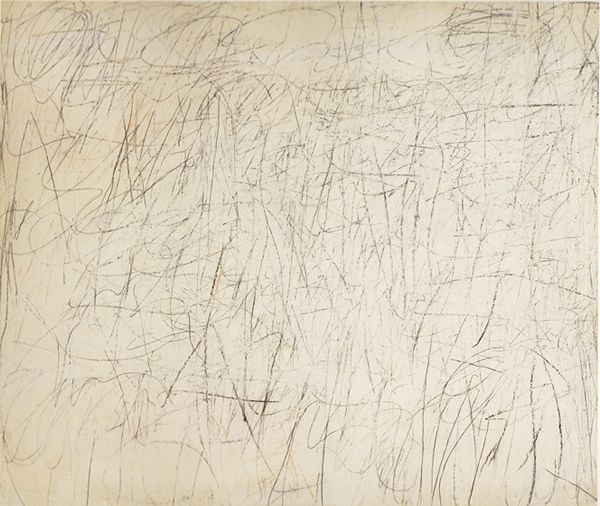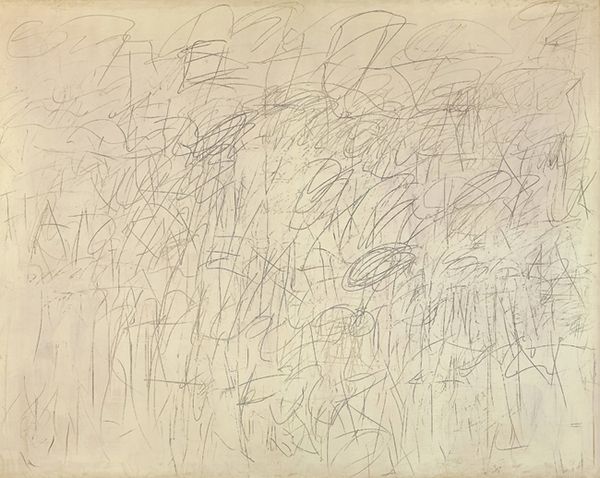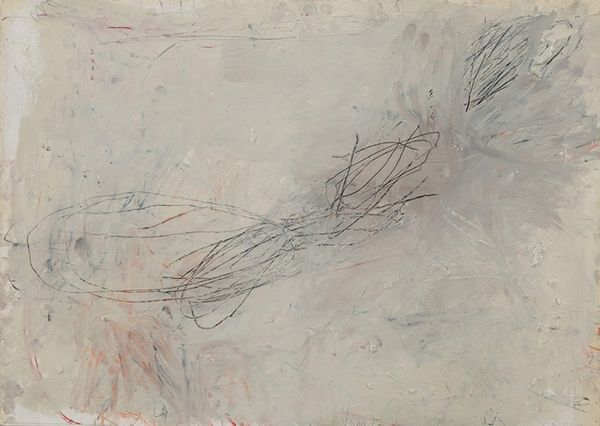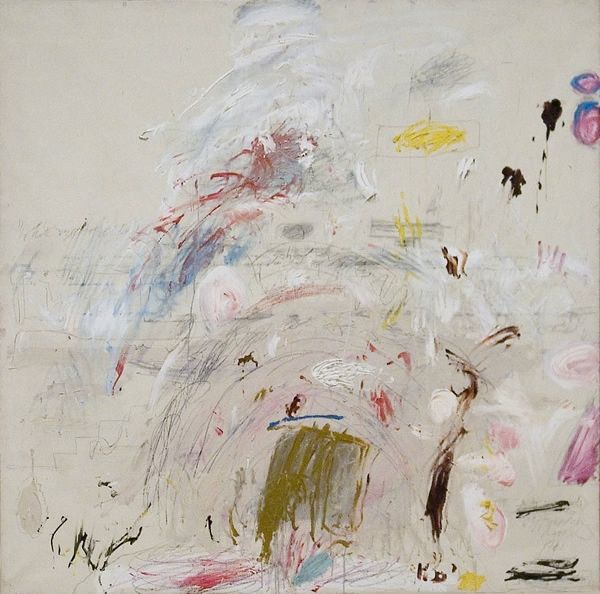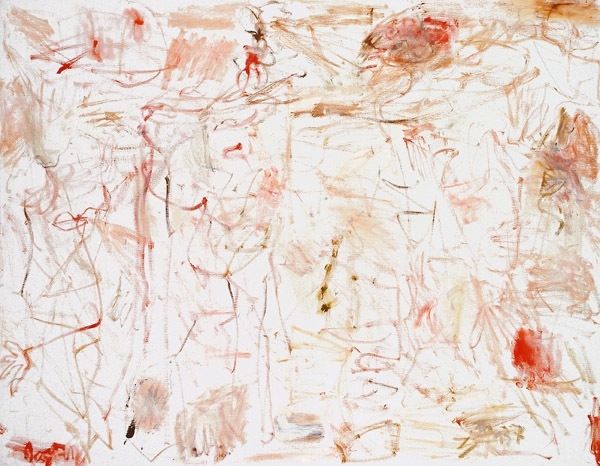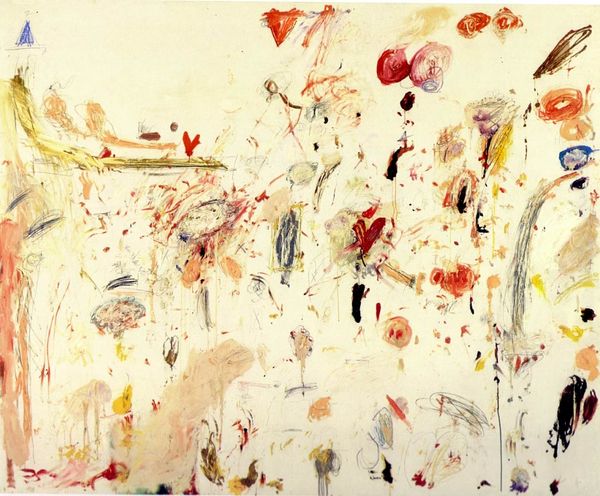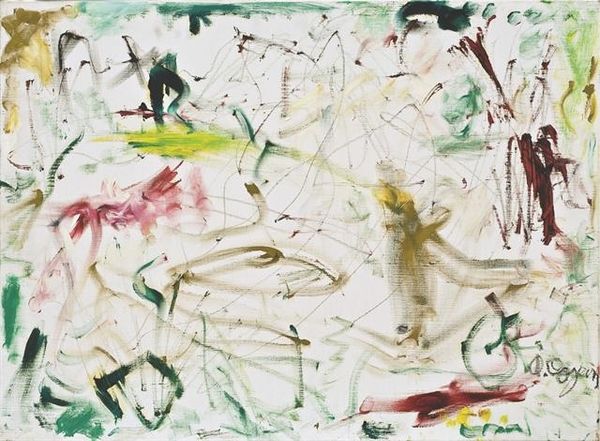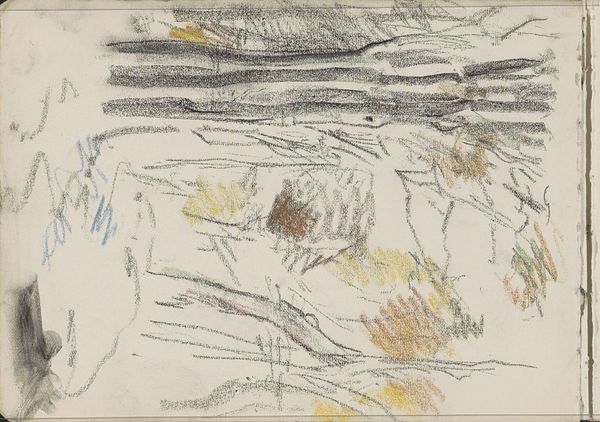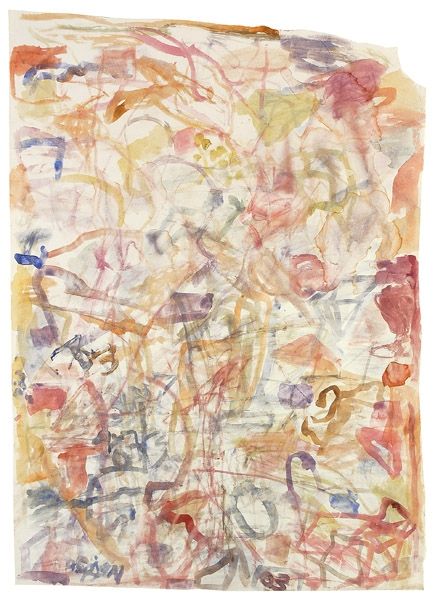
drawing, paper, ink, charcoal
#
abstract-expressionism
#
drawing
#
paper
#
ink
#
black-mountain-college
#
calligraphic
#
line
#
charcoal
#
calligraphy
Copyright: Cy Twombly,Fair Use
Curator: Right, let's dive into this one. Here we have Cy Twombly's "Sunset" from 1957. It's ink and charcoal on paper. Editor: My first thought? It feels incredibly vulnerable. All those scratchy, pale marks on the white...almost like whispers on the verge of disappearing. Curator: That’s interesting. When I look at it, I see a real rawness, like Twombly was trying to capture not just a sunset, but the fleeting feeling of a sunset, you know? That moment of pure emotion. Editor: Definitely, but the emotion feels filtered through a lens of post-war anxiety. This was the late 50s—a period grappling with collective trauma and existential questioning. I wonder if those fragmented lines are somehow mirroring that feeling of societal fragility? Curator: Perhaps. He was definitely plugged into that zeitgeist. I see a connection, too, between those scribbles and graffiti—a kind of primal urge to mark territory, to exist. It almost looks like he's exorcising something onto the page. Editor: Right. And who gets to "own" beauty anyway? Sunsets, often romanticized, can also represent something deeply inequitable depending on where you're standing and who you're standing with, so in my opinion this can relate to colonialism and class divides. Curator: Hmmm, maybe. To me, the calligraphic quality—it's almost like he's writing light, or the echo of light. A love letter perhaps? Albeit a cryptic one. Editor: It could be read as subversive. Calligraphy, historically a practice linked to power and religious text, being intentionally "defaced." I see the dismantling of tradition. Curator: Whatever the interpretation, I find something beautiful and enduring in this chaos. Editor: Yes, even with all its anxieties, I can see a quiet beauty.
Comments
No comments
Be the first to comment and join the conversation on the ultimate creative platform.
